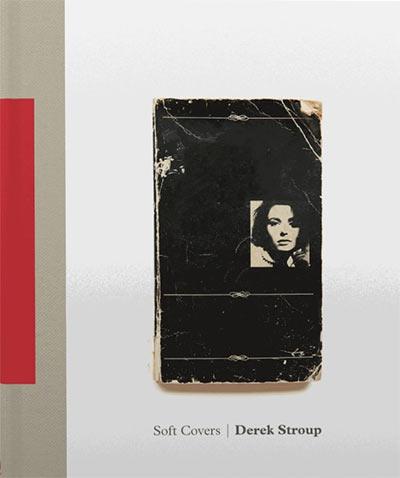

Soft Covers
Derek Stroup, MFA
Lecturer, Art

What is the central theme of your book?
The book is a collection of my photographs of book covers. I photographed these books in my studio in Brooklyn, and then I digitally removed the words from the covers. What remains are the creases and folds and stains - marks from the readers’ hands, and the colors, shapes, and images that are supporting the text: the marketing stuff, the "paratextual surround" of the text. In these photos, you can start to see these books as things that have been touched.
What inspired you to write this book?
Books are more than just things; they are places where information is exchanged. Books mark us on the inside, they change our consciousness. But we also change books as we read them. Our hands leave traces on the covers, records that all say the same thing: a reader was here.
Why is this book important in your field? What does it contribute to the current body of knowledge on this topic?
Books used to be everywhere. Now they are special cases, something we can start to see as something distinct. Like most people, I get nearly all of my information from digital screens. I love this. But unless you dig into your search or file history, it is very hard to see what you've read, what you were thinking about, when you were online. I like the way books sit around - they are visible markers for mental "places" you have occupied at different times in your life.
Were students involved in any research related to your book? If so, please explain and name the student(s).
I love my students, but they weren't involved with this particular project.
Tell me about a particularly special moment in writing this book.
I spent five years working on this project and I started long before a publisher was on board, so it was very satisfying for Quint Editions to become the publisher after years of work.
What is the one thing you hope readers take away from your book?
Books come from factories in perfect uniform condition, then they start to travel through the world, different readers passing them on, giving them away. Each cover records this passage through the economy.
Is there anything else you would like to share about your book?
It was very difficult to get this done during COVID. Mark Quint at Quint Editions simply refused to give up. And, I was very lucky to work with Wendy Belt, the designer of the book. It was also a thrill to have Faheem Haider contribute an essay to the book. An artist and curator as well as a writer, Faheem brought entirely new layers to the project.
What other books have you published?
In addition to my new book, I am the author of six artist’s books: Tourmaline (2014), Utilities (2013), Every Instance Removed (2008), Candy (2006), Rope Swing Manifesto (2004), and Field Guide (2002). My artist books are distributed through Printed Matter, Inc. in New York, the Florence Loewy Gallery in Paris, and Artphilein in Lugano.
I photographed these books in my studio in Brooklyn, and then I digitally removed the words from the covers. What remains are the creases and folds and stains - marks from the readers’ hands, and the colors, shapes, and images that are supporting the text: the marketing stuff, the 'paratextual surround' of the text.
Fun Facts
When did you join Dyson?
I joined Dyson in 2005.
What motivates you as a teacher?
I like seeing students find their own voices as emerging artists.
What do you do in your spare time; to relax/unwind?
I walk all over the city. The complexity and beauty of NYC are endless.
What are you reading right now?
The Half Has Never Been Told: Slavery and the Making of American Capitalism by Edward Baptist.